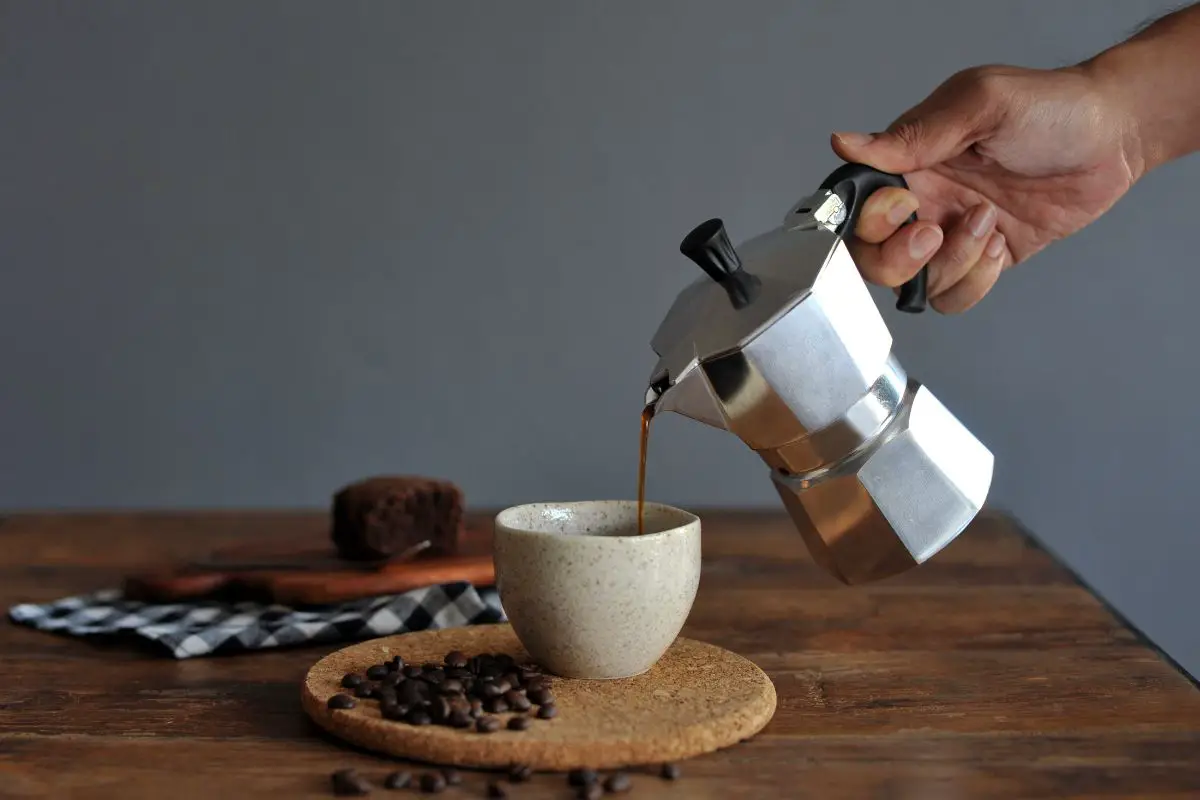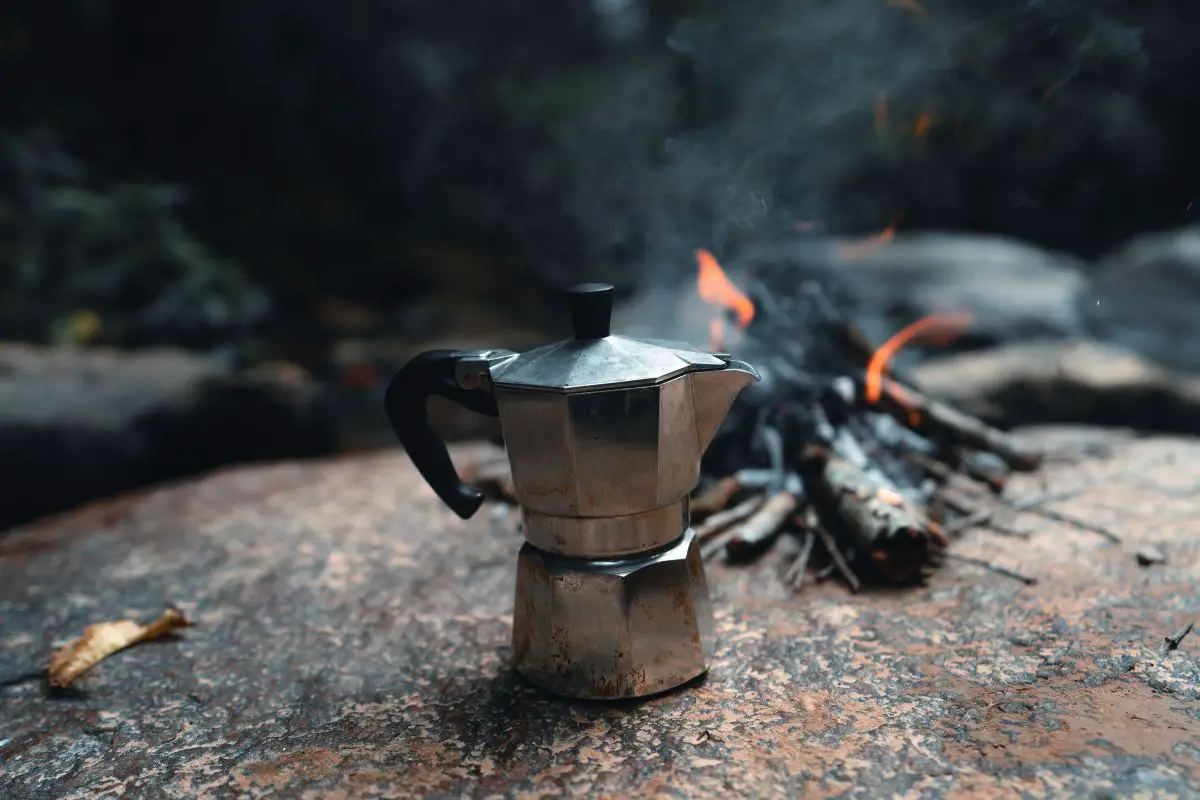In the realm of coffee enthusiasts, the moka pot stands as a revered and time-honored brewing apparatus. With its unique design and brewing process, the moka pot offers a distinctive and robust cup of coffee that is highly sought after by aficionados.

However, one question that often arises is, ‘how long does a moka pot take?’ This inquiry is akin to asking how long is a piece of string, as the brewing time can vary depending on a multitude of factors.
In this article, we will delve into the intricacies of the moka pot brewing process, explore the factors that influence brewing time, and provide tips on achieving the perfect brew.
Furthermore, we will delve into the realm of safety, offering guidance on the cleaning and maintenance of the moka pot to ensure a safe and enjoyable brewing experience.
So, let us embark on this journey to uncover the mysteries of the moka pot and its brewing time.
Key Takeaways
- The brewing time of a moka pot can vary depending on factors such as heat source and pot size.
- On average, the brewing process takes around 5-10 minutes.
- Electric stovetops have a faster brewing time compared to gas stovetops.
- Factors like heat intensity, coffee grind size, and personal preference can affect the brewing time.
Understanding the Moka Pot Brewing Process
The Moka pot brewing process involves the extraction of coffee through steam pressure, resulting in a rich, flavorful brew. This brewing method has been popular for over a century and is known for its ability to produce a strong and aromatic cup of coffee.
The process begins by filling the bottom chamber of the Moka pot with water and placing a filter basket in the middle. Ground coffee is then added to the filter basket, and the top chamber is screwed on tightly.
As the water in the bottom chamber heats up, steam is created, which builds pressure and forces the water to pass through the coffee grounds. This process extracts the flavors and oils from the coffee, producing a concentrated brew that is collected in the top chamber.
The entire brewing process usually takes around 5-10 minutes, depending on the heat source and the size of the Moka pot. It is important to monitor the brewing process closely to avoid over-extraction or burning the coffee.
Once the brewing is complete, the Moka pot can be disassembled and cleaned for future use.
Preparing the Moka Pot for Brewing
To prepare the Moka Pot for brewing, one must first ensure that all components are properly assembled and the water reservoir is filled with the desired amount of water. It is crucial to carefully follow the manufacturer’s instructions to avoid any potential hazards or accidents during the brewing process.
The Moka Pot consists of three main parts: the bottom chamber, the coffee basket, and the top chamber. These parts should be firmly screwed together to prevent any leaks or pressure build-up. Before adding ground coffee to the basket, it is essential to check the basket’s condition and clean it if necessary.
Once the Moka Pot is properly assembled, the next step is to fill the water reservoir with cold water. It is important to remember not to exceed the maximum level indicated, as this could lead to overflow and potential burns. After filling the water reservoir, the Moka Pot is ready for heating and brewing time.
Heating and Brewing Time
Heating and brewing time for the Moka Pot varies depending on the heat source used, with electric stovetops typically achieving a faster brewing time compared to gas stovetops. The Moka Pot operates on the principle of using steam pressure to force water through coffee grounds, resulting in a rich and flavorful brew. To ensure safety and optimal brewing, it is important to understand the time required for heating and brewing.
The following table provides an overview of the average heating and brewing times for the Moka Pot:
| Heat Source | Heating Time (minutes) | Brewing Time (minutes) |
|---|---|---|
| Electric | 3-5 | 5-7 |
| Gas | 5-7 | 7-10 |
It is important to note that these times can vary depending on factors such as the heat intensity, coffee grind size, and personal preference for the strength of the brew. To achieve the perfect brew, it is recommended to start with preheating the water and then placing the Moka Pot on the heat source. This allows for a more consistent heating process and ensures that the water does not boil too quickly, resulting in a burnt or bitter taste.
Transitioning into the subsequent section about ‘tips for achieving the perfect brew’, it is important to consider various factors such as the coffee grind size, water temperature, and the amount of coffee used.
Tips for Achieving the Perfect Brew

One effective approach to achieving an ideal brew is by carefully selecting the appropriate coffee grind size, as it greatly influences the extraction process and the resulting flavor profile. The grind size for a moka pot should be medium-fine, similar to table salt. This allows for a balanced extraction, ensuring that the coffee is not under or over-extracted. Finer grinds can result in a bitter taste, while coarser grinds may lead to a weak and watery brew.
Another important factor in achieving the perfect brew is the water-to-coffee ratio. It is recommended to use one tablespoon of coffee grounds for every 50 milliliters of water. This ratio ensures a strong and flavorful cup of coffee without overpowering the taste.
Additionally, preheating the water before brewing can help speed up the process and ensure even extraction. This can be done by boiling water separately and then pouring it into the base of the moka pot.
To enhance the flavor of the coffee, it is advisable to use filtered water instead of tap water, as it reduces any impurities that may affect the taste.
By carefully selecting the appropriate coffee grind size, maintaining the correct water-to-coffee ratio, preheating the water, and using filtered water, one can achieve a perfect brew with a moka pot. These factors greatly contribute to the overall taste and quality of the coffee.
Moving on to the next section, it is important to understand the proper cleaning and maintenance of the moka pot.
Cleaning and Maintenance of the Moka Pot
Maintaining proper cleanliness and regular maintenance of the moka pot is crucial for ensuring its longevity and optimal performance.
It is recommended to clean the moka pot after each use to prevent the buildup of coffee residue, which can affect the taste of future brews. To clean the moka pot, disassemble all the parts and wash them with warm soapy water. Pay special attention to the filter, as it can become clogged with coffee grounds. Use a small brush or toothpick to remove any residue from the filter holes. After cleaning, thoroughly rinse all the parts to remove any soap residue.
Regular maintenance of the moka pot includes checking the rubber gasket and the safety valve for any signs of wear or damage. These components are essential for creating a proper seal and preventing leaks. If the rubber gasket is worn out or the safety valve is malfunctioning, they should be replaced to ensure the moka pot’s safety and efficiency.
By maintaining cleanliness and regularly inspecting the moka pot, you can ensure that it continues to function properly and safely. With a clean and well-maintained moka pot, you can now explore different recipes and variations to further enhance your coffee brewing experience.
Exploring Different Recipes and Variations

After thoroughly cleaning and maintaining your Moka pot, it’s time to explore the world of different recipes and variations that this brewing method has to offer. This allows coffee enthusiasts to experiment with flavors and find their preferred taste profiles. By tweaking the grind size, coffee-to-water ratio, and brewing time, one can create a personalized cup of coffee that suits their preferences.
To provide a comprehensive understanding of the different recipes and variations, let’s explore a 3 column and 5 row table that outlines some common elements that can be adjusted to achieve desired results:
| Variable | Options | Impact on Coffee |
|---|---|---|
| Grind Size | Fine, medium, coarse | Affects extraction and strength |
| Coffee-to-Water Ratio | 1:10, 1:12, 1:14 | Determines the strength of the brew |
| Brewing Time | 3-4 minutes, 5-6 minutes, 7-8 minutes | Alters intensity and flavor |
| Heat Source | Gas stove, electric stove, induction cooktop | Provides consistent heat for brewing |
| Coffee Type | Arabica, Robusta, blend | Influences taste and aroma |
Remember, when exploring different recipes and variations, it is important to prioritize safety. Follow the manufacturer’s instructions, ensure the Moka pot is properly assembled, and handle it with caution to prevent any accidents or injuries. With proper care and experimentation, you can enjoy a delightful cup of coffee tailored to your taste preferences using your Moka pot.
Frequently Asked Questions
What kind of coffee beans should I use in a moka pot?
When using a moka pot, it is recommended to use coffee beans that are medium to dark roasted. These beans provide a balanced flavor profile and can withstand the brewing process without losing their taste or aroma.
Can I use a moka pot on an induction cooktop?
A study conducted by the International Coffee Organization found that approximately 18% of coffee lovers prefer using a moka pot. However, it is important to note that moka pots are not compatible with induction cooktops due to their reliance on direct heat.
How do I prevent the coffee from tasting bitter?
To prevent coffee from tasting bitter when using a moka pot, ensure proper grind size, water temperature, and brewing time. Use a medium to coarse grind, pre-boil water, and remove the pot from heat when coffee starts to gurgle.
Can I make more than one cup of coffee at a time with a moka pot?
Multiple cups of coffee can be made with a moka pot by using a larger-sized pot or by using a separate coffee container. This allows for a convenient and efficient brewing process, ensuring that coffee lovers can enjoy their favorite beverage without having to brew multiple times.
Is it possible to brew tea in a moka pot?
Brewing tea in a moka pot is not recommended due to the potential risks associated with the high temperature and pressure generated during the brewing process. It is best to use a teapot or other suitable methods for preparing tea.
Conclusion
In conclusion, the Moka pot is a versatile and efficient brewing method that produces rich and flavorful coffee. The brewing process involves heating water in the lower chamber, which creates pressure to force the water through the coffee grounds and into the upper chamber. The heating and brewing time can vary depending on the size of the pot and the heat source, but typically, it takes around 5 to 10 minutes to brew a pot of coffee.
By following the tips and techniques mentioned in this article, you can achieve the perfect brew every time. Experiment with different recipes and variations to discover your favorite flavor profiles.
Related articles: